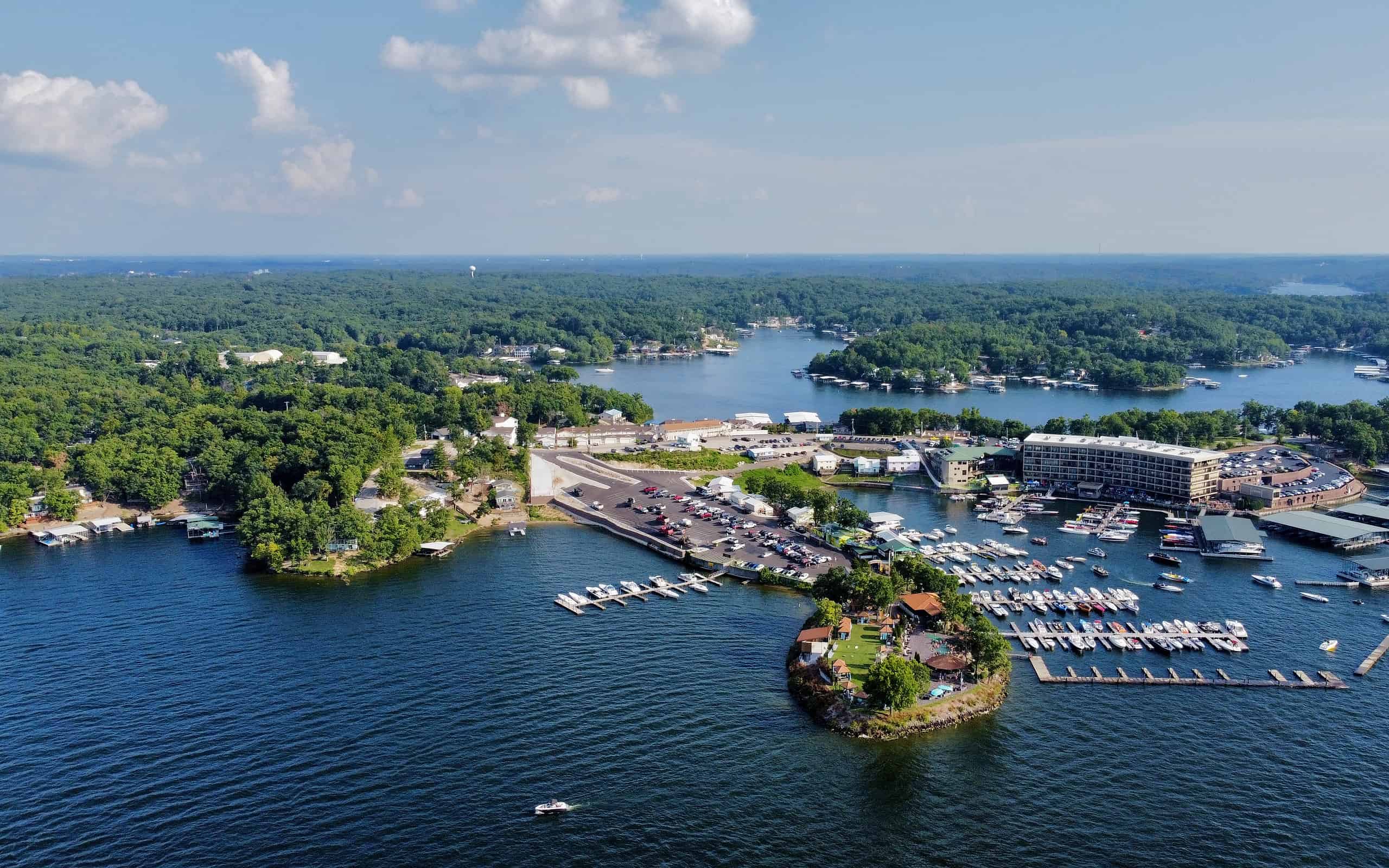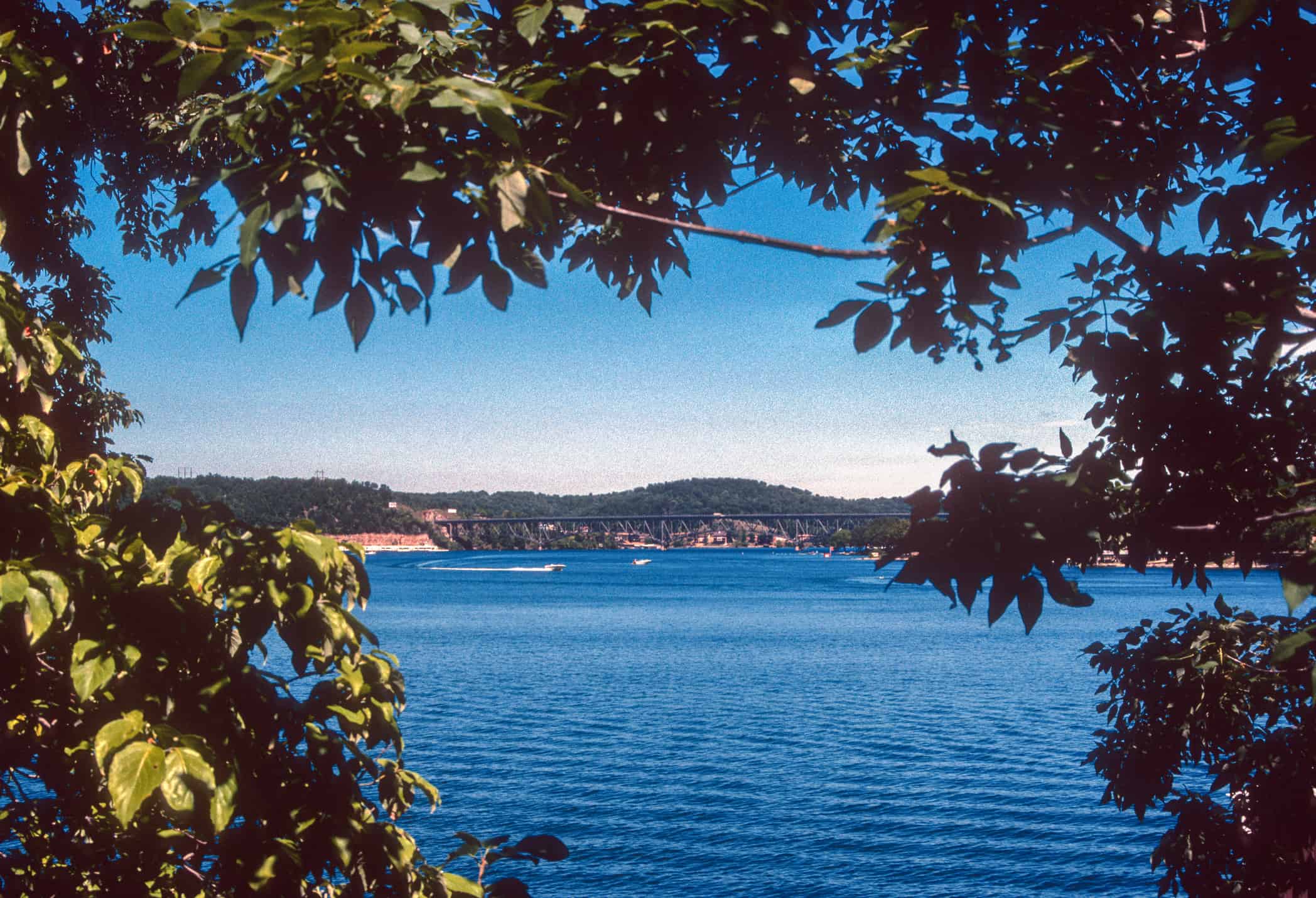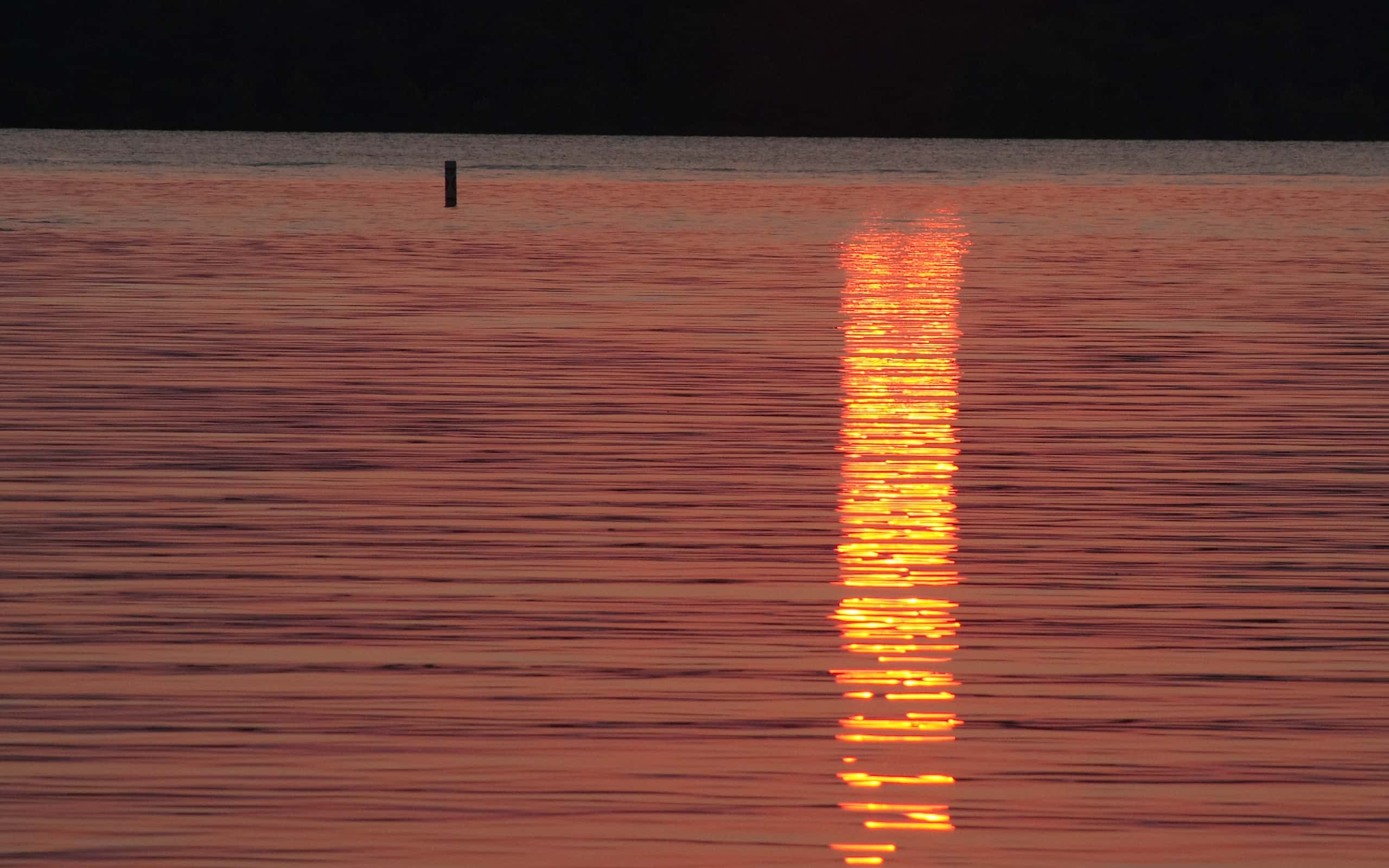The Lake of the Ozarks, often referred to simply as “the Lake” by locals, is a reservoir in southern Missouri created by the Osage River after being blocked by the Bagnell Dam. It spans four counties: Camden, Miller, Morgan, and Benton. It covers approximately 54,000 acres and has over 1,150 miles of shoreline, making it one of the largest man-made lakes in the United States. This extensive waterbody is also a cherished destination, drawing millions of visitors each year for activities ranging from boating and fishing to swimming and relaxation.
However, this lake faces a persistent challenge – water pollution. The pristine appearance of the Lake often shrouds the polluting threats that lurk beneath its surface, which range from nutrient runoff and algae blooms to concerns about bacterial contamination. To truly understand the current state of the Lake of the Ozarks, we must delve into its water quality, dissect the factors contributing to its pollution, and explore the legal and conservation efforts aimed at its restoration.

Shady Gators and Camden on the Lake area of Lake of the Ozarks
©Perry Spring/iStock via Getty Images
The State of Water Quality
The term ‘water quality‘ encompasses various physical, chemical and biological factors that determine the overall health and suitability of a waterbody for its intended uses, including recreation, drinking water supply, and aquatic life support. To assess the water quality of the Lake of the Ozarks, several key parameters are considered:
Temperature
Water temperature affects the Lake’s ecosystem, influencing the distribution of fish species, oxygen levels, and nutrient cycling.
Dissolved Oxygen (DO)
Adequate DO levels are essential for aquatic organisms. Low DO can result in fish deaths and other ecosystem disruptions.
Nutrients
Nutrients like nitrogen and phosphorus, often from agricultural runoff, can lead to excessive plant and algae growth, depleting DO levels and impairing water clarity.
Sedimentation
Soil erosion and sediment runoff can cloud the water, affecting water clarity and aquatic habitats.
Bacterial Contamination
High levels of E. coli bacteria can pose health risks to swimmers and recreational users.
Algal Blooms
Algae, including harmful cyanobacteria (blue-green algae), can multiply in warm waters and produce toxins that harm aquatic life and threaten public health. These algal blooms can also cause eutrophication in waters, which reduced oxygen levels in water. Thus, it can kill fish and other organisms.
Water Quality Concerns
Despite its breathtaking beauty, the Lake of the Ozarks grapples with several persistent water quality issues:
Nutrient Pollution
Nutrient-rich runoff from urban areas and agricultural lands can trigger excessive algal growth, leading to harmful algal blooms (HABs) as mentioned above. These blooms can reduce water clarity, deplete dissolved oxygen in waters as well as produce toxins harmful to both humans and wildlife.
Erosion and Sedimentation
Erosion from construction sites and shoreline development can introduce sediment into the Lake, thus reducing water clarity and disrupting aquatic ecosystems.
Bacterial Contamination
Swimmers and boaters occasionally encounter advisories related to high levels of E. coli, which can result from various sources, including malfunctioning septic systems and wildlife.
Harmful Algal Blooms
As mentioned above, the Lake has experienced recurring HABs due to various reasons including high temperatures and nutrient runoff, prompting health advisories and concerns about the impact on tourism and aquatic ecosystems.

Blue-green algae cover the surface of the flowering water river with a film along the coast. River water pollution. Environmental problems. Copy space.
©Sergii Petruk/iStock via Getty Images
Factors Contributing to Water Pollution
There are several factors that lead to water pollution in the Lake of the Ozarks:
Agriculture and Runoff
Nutrient Runoff
The extensive agricultural lands surrounding the Lake of the Ozarks are a significant source of nutrient runoff. Excessive use of fertilizers containing nitrogen and phosphorus contributes to elevated nutrient levels in runoff.
Pesticides and Herbicides
Agricultural activities often also involve the use of pesticides and herbicides, some of which can find their way into the Lake through runoff.
Erosion
Soil erosion from agricultural fields is also a primary concern. This is because rainfall can wash away exposed topsoil, carrying sediment and attached nutrients into the Lake.
Impacts
Nutrient runoff can lead to water quality issues, such as harmful algal blooms and decreased dissolved oxygen levels. Excessive plant and algae growth can also cloud the water and impair aquatic habitats.
Development and Construction
Shoreline Development
Rapid development along the Lake’s shoreline leads to the creation of impervious surfaces like roads, parking lots, and buildings. This is bad for the Lake because rainfall runoff from these surfaces can carry pollutants into the Lake.
Erosion from Construction Sites
Construction activities can also disturb soil and vegetation, increasing the risk of sedimentation and runoff into the Lake. Increased sedimentation can cloud the water, reducing water clarity and disrupting aquatic ecosystems.

Lake of the Ozarks – Lake Viewed Thru Trees 1987. Scanned from Kodachrome 64 slide.
©scgerding/iStock via Getty Images
Septic Systems and Wastewater
Septic Systems
Improperly maintained or failing septic systems can release bacteria, nutrients, and other contaminants into groundwater. Over time, these pollutants can reach the Lake.
Wastewater Treatment Plants
While wastewater treatment plants are designed to treat sewage, discharges that do not meet strict standards can also introduce contaminants into the Lake.
Impacts
Elevated levels of E. coli and nutrient loading can result from bacterial contamination, potentially posing health risks to swimmers and recreational users. Nutrient loading can also lead to algal blooms and reduced water quality.
Invasive Species
Zebra Mussels
Invasive species like zebra mussels can disrupt the Lake’s ecosystem. They filter algae from the water, altering nutrient dynamics and potentially leading to changes in water quality.
Asian Carp
Asian carp, another invasive species, can disrupt the aquatic food web. Their feeding behaviors and rapid reproduction can impact native species and alter the balance of the ecosystem.
Impacts
Changes in the Lake’s ecosystem due to invasive species can have far-reaching effects, including shifts in water quality and the composition of aquatic communities.
Climate Change
Changing Precipitation Patterns
Climate change can alter precipitation patterns and contribute to more frequent and severe weather events, thus leading to more intense rainfall events or drought events. This can increase the volume of runoff as well as exacerbate erosion and sedimentation.

Vibrant sunset on the 69mm, Lake of the Ozarks, Missouri
©Laura Simpson/iStock via Getty Images
Recreational Activities
Boating and Marinas
Recreational boating and the operation of marinas can introduce pollutants such as fuel and oil into the water. Improperly maintained boats can leak these substances into the Lake.
Human Waste
Swimmers, boaters, and recreational users also contribute to water pollution when proper facilities for waste disposal are lacking.
Impacts
Pollutants from recreational activities can harm water quality and aquatic life. Fuel and oil spills can lead to immediate contamination, while human waste can contribute to bacterial contamination.
Conservation Efforts
Clean Water Act (CWA)
The federal Clean Water Act is a cornerstone of water quality protection in the United States. It sets national water quality standards, establishes regulations to control point source pollution –– which refers to pollution from specific, identifiable sources –– and outlines the responsibilities of federal, state and local agencies in maintaining water quality.
The Environmental Protection Agency sets water quality standards, including maximum allowable levels of various pollutants. States, including Missouri, must develop water quality criteria and standards to meet the act’s requirements.
Total Maximum Daily Loads (TMDLs)
When a waterbody is deemed impaired, TMDLs are developed. These are pollution budgets that specify the maximum amount of a particular pollutant the waterbody can receive while still meeting water quality standards. Missouri’s Department of Natural Resources (DNR) is responsible for TMDL development.
National Pollutant Discharge Elimination System (NPDES)
Under the act, the NPDES program also regulates discharges of pollutants from point sources such as wastewater treatment plants and industrial facilities. Permits are issued to these sources, specifying limits on the pollutants they can discharge.

Speed boats in full throttle in Lake of Ozark and the golf course in the background, Missouri, USA.
©Asim Ali/iStock via Getty Images
Missouri Clean Water Law
Missouri’s Clean Water Law aligns with federal laws like the Clean Water Act and provides a framework for protecting and improving water quality within the state.
The law outlines water quality goals for Missouri’s waters. It directs state agencies to develop plans and programs to meet these goals. The law also addresses nonpoint source pollution, which includes runoff from agricultural lands and urban areas. It promotes best management practices and encourages voluntary efforts to reduce pollution.
Finally, the law also establishes the State Revolving Fund, which provides low-interest loans for wastewater infrastructure projects. This helps municipalities upgrade wastewater treatment facilities, thus reducing pollution.
Ozark Water Watch
Ozark Water Watch is a prominent nonprofit organization dedicated to protecting the water quality of the Lake of the Ozarks and surrounding watersheds.
The organization conducts regular water quality monitoring to assess the health of the Lake and identify pollution sources. It also engages with communities, businesses, and individuals to raise awareness about the importance of clean water and responsible environmental stewardship.
Ozark Water Watch also promotes best management practices to control erosion, manage stormwater, and reduce nutrient runoff. It advocates for policies and practices that protect water quality and the Lake’s ecosystem. Thus, it fosters a sense of community responsibility for water quality through programs like “Adopt-the-Shoreline.”

Lake of the Ozarks, Osage Beach area of Missouri. This lake has regained some of its purity due to conservation efforts.
©iStock.com/Perry Spring
Best Management Practices
Best management practices (BMPs) are a crucial component of water quality conservation. They encompass various practices and strategies to reduce pollution and protect water resources. In the Lake of the Ozarks region, BMPs include techniques to stabilize shorelines and prevent erosion, such as the use of riprap or retaining walls.
Officials can also install riparian buffers by planting native vegetation along shorelines to filter runoff, reduce erosion, and provide habitat for wildlife. They can also implement stormwater management systems in urban areas to capture and treat runoff before it enters the Lake.
Proper maintenance and regular inspections of septic systems are therefore necessary to prevent contamination of groundwater and surface water. Ensuring that wastewater treatment facilities meet stringent environmental standards will also help save the lake.
Other Lakes in Missouri
To gain a broader perspective on water quality in Missouri, it is essential to consider other lakes in the state.
Table Rock Lake

Table Rock Mountain, Pickens, South Carolina, USA lake view in autumn at dusk.
©Sean Pavone/iStock via Getty Images
Location: Southern Missouri, near Branson
Table Rock Lake is famous for its crystal-clear waters, making it a popular destination for boating, swimming, and scuba diving. The lake supports a thriving cold-water fishery, particularly trout, which are stocked regularly. This makes it a favorite among anglers.
Surrounded by the picturesque Ozark Mountains, Table Rock Lake also has stunning vistas, making it a popular spot for nature lovers and photographers. Table Rock Lake also benefits from relatively good water quality. Its clear waters are maintained, in part, by the regular releases of cold water from the bottom of Table Rock Dam. Additionally, responsible land use practices and watershed management contribute to its overall health.
Conservation practices such as shoreline stabilization and buffer zones help minimize sediment runoff into the lake. Strict wastewater management and sewage treatment regulations also protect water quality. The lake is also doing well because local agencies and organizations actively promote responsible tourism and environmental stewardship.
Lake Taneycomo

View of Tablerock lake from a cliff overlooking Lake Taneycomo
©rcerini/iStock via Getty Images
Location: Southern Missouri, downstream from Table Rock Lake.
Lake Taneycomo is a unique, cold-water lake created by the damming of the White River. It differs from typical Ozark reservoirs due to its cold-water source. The lake is renowned for its excellent trout fishing, with rainbow and brown trout being the primary species. It is considered one of the best trout fisheries in the Midwest.
Surrounded by the Ozark Mountains, Lake Taneycomo has a lot of scenic beauty and tranquility. Lake Taneycomo also benefits from its cold-water source, which originates from the bottom of Table Rock Lake. This cold water helps maintain good water quality, with high dissolved oxygen levels that is conducive to trout populations.
Conservation efforts include regulated releases from Table Rock Dam to maintain these cold-water conditions in Lake Taneycomo, thus maintaining an ideal habitat for trout. Organizations and agencies actively work to restore and enhance trout habitat in the lake. Local communities also promote responsible fishing and conservation practices to protect this unique resource.
Stockton Lake

Sunset over Stockton Lake in southwest Missouri taken in late summer. Beautiful red sky with sunlight reflecting off the lake surface
©Jerry Dorris/iStock via Getty Images
Location: Southwestern Missouri, near Stockton
Stockton Lake is a popular destination for boating, sailing, and fishing. Its 24,900 acres provide ample space for water recreation. The lake is known for its relatively clean and clear waters, which enhance the boating and swimming experience. Surrounded by rolling hills and scenic bluffs, it offers both natural beauty and a peaceful atmosphere.
Stockton Lake generally enjoys good water quality. It benefits from having a smaller watershed and less intensive development compared to larger lakes like the Lake of the Ozarks. Responsible land use practices and vigilant monitoring also contribute to its water quality.
Conservation efforts include erosion control measures and sediment management which help maintain water clarity. Local communities also actively promote responsible tourism and outdoor recreation. Luckily, there are also several educational programs as well as community engagement that raises awareness about the importance of protecting Stockton Lake’s natural resources.
These lakes in Missouri each contribute to the state’s rich natural heritage. While they may not be as large or face the same level of water quality challenges as the Lake of the Ozarks, their preservation is equally important in ensuring that these lakes continue to provide recreational opportunities and natural beauty for generations to come.
Final Thoughts
The Lake of the Ozarks is one of the most important pieces to Missouri’s natural beauty. But its pollution problem also shows the importance of responsible environmental stewardship. While it grapples with water quality challenges stemming from various sources, concerted efforts such as legal frameworks, and community initiatives offer hope for its preservation and restoration.
The photo featured at the top of this post is © Perry Spring/iStock via Getty Images
Thank you for reading! Have some feedback for us? Contact the AZ Animals editorial team.






